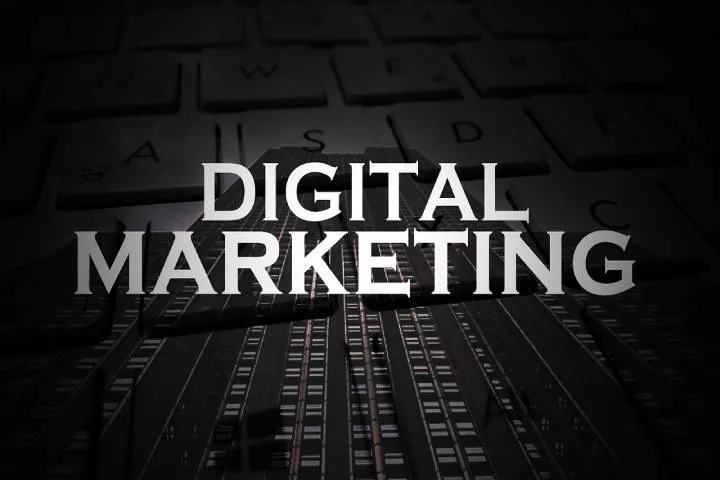Software
Pricing For Profits: Three Simple Rules To Price Your Product
However, you should follow some simple rules when pricing every product to ensure success. This article provides common tips to price your SaaS product properly.

SaaS pricing is the most challenging aspect of launching a business. It’s difficult and time-consuming, and if you make any mistakes, it can quickly spell disaster for your company. That being said, it doesn’t have to be this difficult.
Many startups ask services to develop valuable pricing strategies for their businesses to delight customers and increase revenue. However, you should follow some simple rules when pricing every product to ensure success. This article provides common tips to price your SaaS product properly.
Table of Contents
1. What Is Product Pricing?
Product pricing is the process of setting the price for a product, which enables customers to purchase a product and receive value for their money. SaaS companies often find it difficult to put a price on their products because they provide value over time. Everybody should follow three major rules while setting a price on SaaS products listed below.
2. Common SaaS Pricing Models
SaaS pricing models are critical to your business and different from other product costs. They are rather simple and make it easy to understand. These pricing models are divided into four common categories:
Flat Rate Pricing
Flat rate pricing is one of the simplest SaaS pricing models. It usually refers to a one-time payment to use the product and get unlimited access. Usually, this model is used for simple products or services that have clearly defined features, while you are charged per month, per year, or the number of users.
This model is good when you’re targeting small businesses because they want simplicity and prefer a cheaper product with fewer features. Your customers may be less price sensitive in this case because they are saving money by paying less upfront.
Usage-Based Pricing
Revenue is generated from the usage of the product. This model is usually used for products that provide a certain level of service or quantity. The cost can be determined by the amount of time spent, storage space, or the number of people using it.
It is also used to sell add-ons like support packs, extra features, or additional products to those who want more than they currently have. This model is good if your customers are looking for more value and expect more features in a product over a longer period, and they want to pay only if they use it after buying.
Tiered Pricing Model
Tiered pricing charges users based on the number of licenses or products they bought. It’s the most popular SaaS pricing model because most customers expect to pay for what they use, and it gives them a chance to save money by paying less for the product they use less often. With this model, you need to provide some basic features at a higher price, and when customers require more features or extra functionality, you will lower the price.
Per User Pricing Model
Per-user pricing is a SaaS pricing model used when you want to set a specific price for each user. This model is good if your product is targeted to different people in terms of features and requirements.
The amount a customer pays will depend on the number of users, which makes customers think carefully before adding users. It’s usually used when the seller doesn’t want to share their secrets and can’t provide a fixed price that covers all users’ needs because different customers require different features.
3. Value-Based Vs. Needs-Based Software Pricing
Value-based pricing is one of the most common pricing strategies in the software industry. Compared to needs-based pricing, it can give a more accurate idea of what value customers get from your product. Value-based vs needs-based software pricing are different, and it will be clear once you know the difference between them.
4. Three Simple Rules To Price Your Product
The three simple rules to price your SaaS product follow below:
Know Your Customers
It is necessary to understand your customers. You need to know their behavior, needs, and what they expect from the product you offer. You should also check out similar products that already exist in the market to gain more information about the current trends of the pricing models and how customers are willing or not ready to pay for them. They will judge the value for the money, and if it’s low, they won’t purchase your product no matter how great it is.
Know The Market
Knowing the market means you should compare your product with other similar products. You should understand the price of these products and how your customers are willing to pay for them. It is also important to check out new features as well as bugs for those similar products, which can tell you about the future of your business and what platform people are using.
Consider The Cost Structure
It is important to consider the cost structure of your product as well. You have to understand how much time, resources, and money it will take to build your product. Also, you need to know what time a customer will spare for it at first so that you can calculate the pricing model accordingly for the business to succeed.
5. The Bottom Line
SaaS pricing is about understanding customers’ needs. You need to understand what your customers want and what they are willing to pay for and know all the significant rules related to SaaS pricing models. It is also important to know your cost structure and how much time and money it will take to build the product. Each SaaS pricing model has unique pros and cons, but they will serve you best if you follow the three simple rules mentioned above.
Programming
Top Benefits of Hiring a Professional Android App Development Company
This guide illuminates the unparalleled benefits that startups, entrepreneurs, tech enthusiasts, CEOs, and CTOs can reap from partnering with a professional Android app development company.

In today’s fast-paced digital landscape, mobile applications serve as the backbone for businesses seeking to thrive and outperform competitors. Particularly, Android, with its expansive global market share, presents a fertile ground for businesses to cultivate brand loyalty and customer engagement.
This guide illuminates the unparalleled benefits that startups, entrepreneurs, tech enthusiasts, CEOs, and CTOs can reap from partnering with a professional Android app development company.
Table of Contents
1. The Rise of Android Apps
Android dominates the mobile operating system market, boasting billions of active devices worldwide—a testament to its ubiquity and user preference. The incentives for businesses to invest in Android app development are compelling, given the platform’s broad reach and the personalized experience it offers users.
These statistics not only underscore the potential for significant market penetration but also highlight the importance of creating a robust presence on this platform.
2. The Need for Professional Expertise
While the allure of developing an app in-house or on a tight budget might seem appealing, this approach often leads to subpar outcomes that can tarnish your brand’s reputation. This section explores the myriad challenges DIY developers face, from technical pitfalls to a lack of strategic insight, framing the conversation around the invaluable benefits of engaging a professional Android app development team.
3. Top Benefits for Businesses: Enhanced User Experience
A seamless, intuitive user interface is crucial for app retention. Professional developers leverage their mastery of the Android platform to craft applications that are not only visually appealing but also highly functional and user-friendly.
4. Tailored Solutions
Every business has unique needs and customer expectations. A seasoned Android app development company will work closely with you to understand your vision, ensuring the final product perfectly aligns with your business objectives.
5. Cost Savings and Faster Time to Market
Expert developers streamline the app development process, utilizing efficient workflows and the latest technology stacks. This efficiency translates to cost savings and a faster launch, giving you a competitive edge in the market.

6. Quality Assurance and Support
Beyond development, professional companies offer rigorous quality testing and post-launch support, ensuring your app remains compatible with new Android versions and hardware variations. This ongoing commitment to quality safeguards your investment over time.
7. Brand Reputation and Credibility
In today’s digital landscape, consumers have high expectations for app performance and user experience. By investing in a professional development team, your brand can establish credibility and build a positive reputation among users.
8. Scalability and Future Proofing
A well-designed Android app should be able to adapt to evolving business needs and technological advancements. Professional developers design apps with scalability in mind, future-proofing your app for long-term success.
9. Maximizing Monetization Opportunities
Expert developers not only create high-quality apps but also offer valuable insights on monetization strategies and opportunities. With their knowledge of the Android market, they can help you maximize revenue from your app.
10. How to Choose the Right Development Company
Selecting the ideal mobile app development company for your Android app project requires careful consideration. Here are some key factors to evaluate:
- Portfolio and Expertise: Examine their past projects to gauge their industry experience and technical proficiency.
- Client Testimonials: Seek feedback from previous clients to understand their working style and commitment to deadlines.
- Communication and Flexibility: Choose a company that values transparent communication and is adaptable to changing project requirements.
- Cost-Efficiency: Ensure their pricing models align with your budget without compromising on the quality of the output.
Conclusion
Investing in a professional Android app development company is a strategic decision that can significantly amplify your business’s digital footprint, enhance user engagement, and drive growth. By partnering with experts who understand the nuances of the platform and prioritize your business needs, you position yourself for success in the competitive app marketplace.
So, choose wisely and take your business to new heights with a high-quality, custom Android app. Keep innovating! High-quality Android app development companies can help businesses of all sizes harness the full potential of the platform to reach their target audience and achieve their business goals.

 Instagram3 years ago
Instagram3 years agoBuy IG likes and buy organic Instagram followers: where to buy them and how?

 Instagram3 years ago
Instagram3 years ago100% Genuine Instagram Followers & Likes with Guaranteed Tool

 Business5 years ago
Business5 years ago7 Must Have Digital Marketing Tools For Your Small Businesses

 Instagram4 years ago
Instagram4 years agoInstagram Followers And Likes – Online Social Media Platform





















